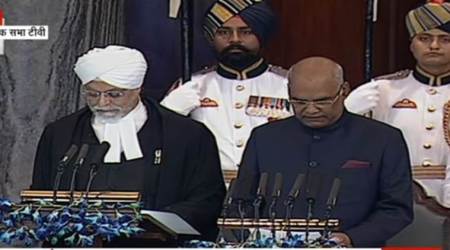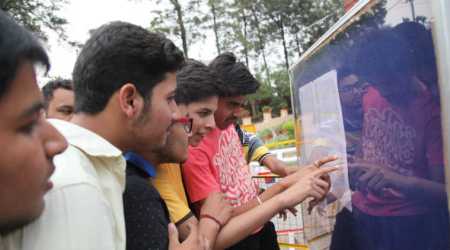 India’s HS Prannoy beat Parupalli Kashyap 21-15, 20-22, 21-12 in the final of the US Grand Prix Gold.
India’s HS Prannoy beat Parupalli Kashyap 21-15, 20-22, 21-12 in the final of the US Grand Prix Gold.
A month after scoring one of the most sensational upsets of the first half of the 2017 season – beating Lee Chong Wei and Chen Long on successive days – ought to be a good time to analyse why the big headline-hunter HS Prannoy isn’t headed to the Glasgow Worlds in a month’s time. Surely scoring those stunning upsets should get him amongst India’s Top 4 male shuttlers who will line up for the World Championships? And now there is the title from Anaheim, California – the US Open Grand Prix, his first since the Swiss Open sixteen months ago in March 2016 and third overall.
The 25-year-old is expected to become India’s second highest ranked player after Kidambi Srikanth post the American title after returning to the Top 20 this week. He was even World No.12 same time, two years ago, and easily the best Indian on show at the PBL earlier this year. But it’s tough to shrug off the 10 first round losses, 10 pre-quarterfinals, 3 quarters and just one semifinal between the Swiss and US Opens – the lapses explaining why he’s recuperating in his injury-infested career and not prepping for Glasgow.
“For all the headlines, I hadn’t played a final since Swiss Open last year. It felt good to just play a final here,” he said after beating compatriot and gritty team-mate Parupalli Kashyap 21-15, 20-22, 21-12 in 65 minutes – late on Sunday on the American west coast, and dawn-time in India. A decent NRI crowd fetched up to watch the all-India finals, a high-paced, top-quality encounter where Prannoy bossed at the net and Kashyap literally pushed him back with drives in a defiant second set as the 31-year-old himself attempted to rediscover the game that had him pegged as India’s best for a good few seasons till injuries ravaged his rankings and resilience.

Unforced errors after he led 11-9 at interval in the first set and in a heap in the decider delayed Kashyap’s decisive comeback. But it was Prannoy’s strong, meticulous constructing of points – bit by bit, a net winner-followed by the smash kill, that helped him resurrect his challenge after his senior showed vintage spunk in hitting hard and hasty. “I think I’ve stayed positive and focussed only on the next point. My injury situation and all the results mean, I’ve decided I can only approach a match point by point,” Prannoy said, having shirked off a low back inflammation at Canada last week.
“Kashyap’s a fighter and it’s amazing he can play at this high level after the injuries. But on certain days, my body feels good when I know I can overcome another fighter,” he chuckled, talking about two warriors on the mend. Prannoy’s peculiar body structure – that takes on a lot of load owing to his style of play – means he’s had to make peace with constant breakdowns, that throw a spanner into what ought to be his strength.
Blessed with a big power game, the body has to be willed into explosive torques each time if he has to win, and on good days he can be quite a handful to the best in the world. But on bad days – when he doesn’t feel upto uncoiling his massive smash, life gets difficult.
Unlike others who ease into tournaments in first few rounds and then go into a frenzy, Prannoy also faces starting troubles like a 80s kick-fired scooter. “The start’s always tricky for me – quarters and pre-quarters, the body doesn’t have the motivation and feels lethargic. I need to focus hard on initial three rounds, once I get past pre-quarters the atmosphere takes over and I feel confident of winning,” he explains. It can explain those 10 first round exits, and as many in the pre-quarters, as also the sweet spot he struck at Indonesia before fizzling out at the Australian Open.
The US Open then, is about simply stringing 6 match days together. There’s also the unique problem of Prannoy struggling a tad against new names that keep popping up on the circuit in Europe and America. “I find it tough to understand new games and some weird and unorthodox actions. If I start doubting my body fitness also, then I’m in deep trouble,” he adds.
While he’s missing the Worlds, Prannoy will be keen to plan long-term, and get used to winning titles – first the GP Golds, then the Super Series. “It just feels good to win a title,” says the man whose mind and body finally cooperated to give him that much needed title.

